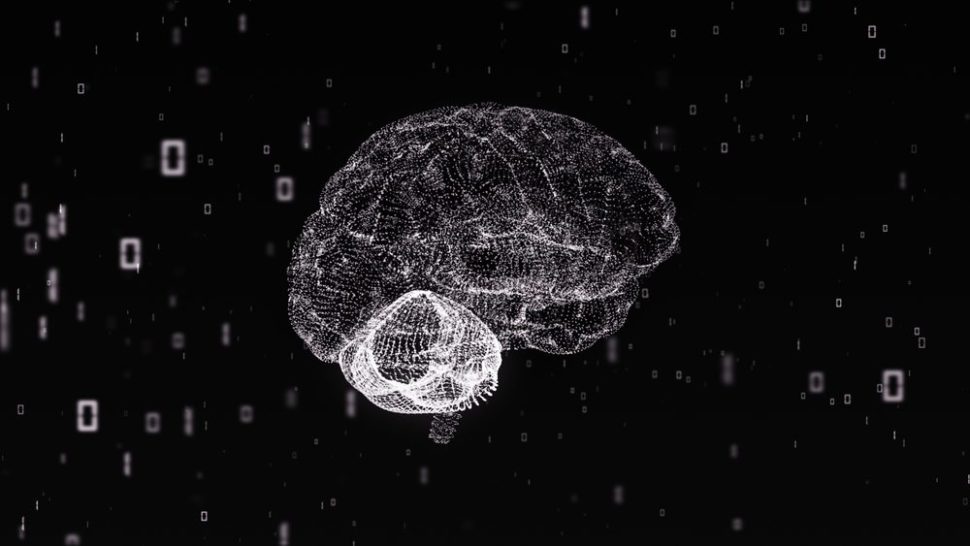Happy new year. Looking back, 2017 brought about the biggest achievements in artificial intelligence technology we’ve seen yet.
While we haven’t achieved AI the likes of HAL 9000 or Deep Thought, neural networks pulled off some incredible things this year.
Though there were many more accomplishments, there are 6 things AI can do now that it couldn’t do last year that really indicate 2018 will bring us closer to our robot overlords.
2017: The Year #AI Learned to Win at PokerClick To TweetBefore We Begin, a Retrospective of Previous AI Achievements
Technological progress isn’t as exponential as it used to be. But a Tesla car using the autopilot function drove a man to a hospital in 2016. The man credits this tech with saving his life. AI also predicted the 2016 election and increased correct cancer diagnoses. Swarm AI even predicted the Kentucky Derby winner.
What did AI do in 2017?
Thing 1: AI Can Now Hold Interviews at Press Conferences
Number one on our list of more accomplishments, there are 6 things AI can do now that it couldn’t do last year might seem silly. But, it was 2017: a year of notable cyber attacks, a 5-year Mars colonization plan, and everything in-between.
While Erica, the autonomous android, stole many hearts this year, another hyper-realistic AI made news. Hanson Robotics created Sophia, the learning robot who received citizenship in Saudi Arabia. Ignoring the controversy of that decision, Sophia is just that: a robot.
While she can learn and tells jokes on Good Morning Britain, is she an AI? Even Ben Goertzel, chief scientist of Sophia, says she isn’t true AI. But she is intelligent and, thanks to former Disney Imagineer David Hanson, she has a human face. She can hold a conversation and respond to various sensory inputs more fluidly.
Of course, every conventional AI has programming, or some sort of supervised plan or method of input. Sophia is able to respond and express herself in a more human way thanks to three key facets:
- Visual Recognition: Sophia uses visual inputs to answer questions like “Is that window open or shut?”
- Speech Recitation: Sophia can be pre-loaded with content and recite it back, utilizing machine learning to provide appropriate vocal inflections and facial expressions
- Chatbot Functions: Similarly to Siri, Sophia can piece together relevant responses based on aural and visual inputs
As a social AI, Sophia has a great deal to learn still.

Thing 2: AI Can Identify Celestial Bodies in Space
Despite consistent reductions in budget over the years, NASA remains one of the leaders in space exploration technologies. Discovering new celestial bodies and learning more about humanity’s place in the universe is always exciting. It is also easier these days thanks, in part, to the use of AI.
Neural networks sifted through years of data to help scientists locate a new planet in the Kepler-90 system. The unprecedented assistance led to the identification of Kepler 90i. Even just a few years ago, automated processes could not discern an exoplanet from orbiting stars.
What else can AI tell us about exoplanets by helping human scientists sifting through and narrowing down data? Perhaps that will be a feature of our article detailing AI accomplishments in 2018.

Thing 3: AI Can Kick Your Butt at Texas Hold ‘Em
When AI beat the reigning Go champion in 2014, researchers rejoiced. In 2017, a new neural network–AlphaGo Zero–beat the old AI 100 times in a row. Not only that, it taught itself how to play using only the basic rules of the game. But move over Zero, there is a new gamified AI in town.
The computer science department at Carnegie Mellon University developed an AI that won in no-limit Texas Hold ‘Em. The impressive thing here is not so much that it won at Poker, but the type of Poker at which the AI won. In 120,000 hands, Libratus defeated four Hold ‘Em experts in what is known as an “imperfect information” game.
Just like Sophia, Libratus uses three key algorithms in interpreting inputs and adapting:
- One algorithm produces an overall strategy “blueprint”
- Another algorithm produces subgame strategies developed during play
- The final algorithm mends possible weaknesses and acts as a “self-improver” algorithm for the original “blueprint” algorithm
Again, this development is huge because of how important bluffing is when it comes to Poker. The strategies Libratus showcased didn’t just apply to Poker either–they could apply to other “imperfect information” games.

Thing 4: AI Can Teach Itself How to Code
Our list of 6 things AI can do now that it couldn’t do last year includes being able to write itself. What a time to be alive, no?
Neural networks can now teach themselves a host of abilities. One such ability: coding. Though the feat itself is impressive, more than one company developed AIs with this ability. Microsoft and Google both have respective AIs that used machine learning to learn how to code.
AutoML and DeepCoder are totally unprecedented in their capacity for future abilities. For DeepCoder, rather than copying other code, researchers provided the building blocks of code. The algorithm inferred how the code fit together to function and could learn to recognize other code.
AutoML seeks to develop AI to invent better AI. If your Skynet alarms are going off, maybe you should jump ship on this article before thing 5.

Thing 5: It Can Also Invent and Teach Itself New Languages
The tech development heard round the world: Facebook AI invents its own language. Contrary to popular myth, it was not this reason that Facebook shut them down. While the implications of an AI circumventing humans for communication are terrifying, the experiment failed.
The issue lay in the fact that the purpose of the AIs was to understand human language. Speaking their own language renders the main goal of improving AI-to-human language impossible.
Thing 6: Robots and Chatbots are Becoming More Like Actual AI
The distinction between artificial intelligence and robot is beginning to blur. While robots refer to physically capable machines that only perform programmed functions, AI typically refers to a set of algorithms that take advantage of machine learning or neural networks to adapt. That’s why number 6 on our list of 6 things AI can do now that it couldn’t do last year involves how robots might evolve into AI.
While the robot guards in San Francisco can’t learn yet, it is a huge step toward autonomous security. The AV1, a robot to end isolation, functions as a limited AI and comes with a companion app. It responds to sensory inputs. But even compared to this kind of robot, chatbots function much more like AI.
Don’t think assistants like Alexa, Siri, or Google Home. There are chatbots designed to embody specific personalities such as a flirtatious woman, a 31-year-old hacker/computer analyst, and more.
You can find less quirky chatbots utilized in apps like Facebook Messenger, Slack, and others. In fact, the AI chatbot industry is poised for major growth in the coming year. You can even build your own chatbot with platforms like Pandorabots.
Are AIs like Joy from Blade Runner 2049 in our future?

Limitless Possibilities or Limited Perspective?
Perhaps one of the biggest impediments to AI and machine learning is human bias. If machines learn by ingesting biased data, it follows that anything learned would extrapolate skewed information into macro processes. To that end, who’s responsible to account for this bias?
In fact, long-time AI researchers contend that researchers may need to start over entirely to create true AI. Regardless of the path, we are certainly approaching tremendous breakthroughs in artificial intelligence as we enter 2018.


















Comments (0)
Most Recent